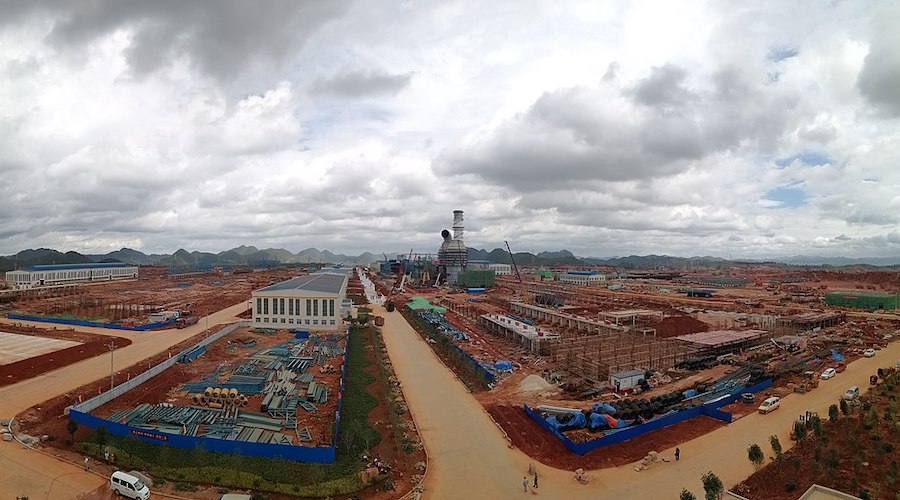
China’s production of primary aluminum is closing in on last year’s record highs as previously idled capacity ramps up in Yunnan province.
The country increased production by 5% year-on-year to 3.65 million metric tons in May, according to the latest estimate from the International Aluminium Institute.
National output is now running close to an annualized 43.0 million tons, within touching distance of the record highs seen in September and October last year.
The strength of primary production growth has served to further tighten up the market for alumina, the intermediate product refined from bauxite. Chinese spot prices are currently trading close to their highest levels since late 2021, in turn providing cost support for the metal price.
Yunnan has seen much improved rainfall this year, alleviating power shortages in the hydro-rich province.
The local authorities have lifted operating restrictions on primary aluminum producers, facilitating the restart of around 1.15 million tons of capacity that was ordered off-line last November.
Yunnan has emerged as a major primary production hub in recent years as smelters have relocated from coal-rich provinces to lower their carbon footprint.
The province now hosts almost six million tonnes of annual smelter capacity and has become an important swing producer depending on rainfall patterns.
Right now, local production is in full upswing thanks to an alleviation of the persistent drought conditions that caused rolling closures over the last couple of years.
China’s annualized production has grown by just over one million tons so far this year, almost fully reversing the sharp drop seen in November when Yunnan capacity powered down.

Domestic alumina supply has struggled to keep up with demand from the smelter restarts in Yunnan.
While national production of the primary metal rose by 5.4% in the first five months of the year, output of alumina was up by just 3.4%, according to local data provider Shanghai Metal Market.
The mismatch of supply and demand is clear to see in the relative price performance of the Shanghai Futures Exchange’s (ShFE) alumina and aluminum contracts. The latter is up by 3.5% since the start of January, while the price of alumina has risen by 15.3%.
Chinese alumina prices have been volatile in 2024, jumping in January due to concern about bauxite supplies from Guinea and again in May after Rio Tinto declared force majeure on third-party deliveries from its alumina refineries in Queensland due to restricted gas supplies.
Spot alumina is currently assessed by Shanghai Metal Market at 3,910 yuan ($537.95) per ton, just shy of last month’s two-and-a-half year high.
The ShFE contract, newly launched last year, has been particularly frenetic, rising above the 4,000-yuan mark in May and currently trading below the spot physical market at 3,800.
The root cause of higher and more volatile pricing is China’s stretched upstream supply chain.
Environmental inspections caused multiple domestic bauxite mines to suspend operations early in the year, which in turn has constrained alumina production growth.
The country’s increasing reliance on bauxite from Guinea to fill the supply gap means domestic alumina pricing is becoming increasingly sensitive to overseas supply disruption.
China has stepped up imports of alumina to help balance the internal market. Inbound shipments totalled 1.15 million tons in January-May, up by 60% on the first five months of 2023.
However, the country is simultaneously exporting ever more alumina to Russia.
Russian producer Rusal has been short of raw material since the invasion of Ukraine in 2022, losing both the Nikolaev refinery in Ukraine and access to its Australian joint venture due to sanctions.
Chinese alumina producers increased exports to Russia from just 1,750 tons in 2021 to 1.12 million tons last year. Exports so far this year have surged another 46% to 610,000 tons.
On a net basis the country has been a relatively small net importer to the tune of just under 500,000 tons in 2024. That’s not been enough to fully offset the domestic supply gap nor replenish stocks in any meaningful way.
China’s alumina squeeze should diminish over the coming months.
Current high prices are likely to spur the country’s refineries to increase supply while the early-year acceleration in demand should abate as Yunnan’s smelters complete their restarts.
Analysts at Macquarie expect alumina prices to peak in the third quarter of the year as the market shifts back to supply surplus, although the bank expects only a marginal 220,000-ton surplus over 2024 as a whole.
However, the sustained rally in alumina pricing this year is a sign that aluminum’s upstream supply dynamics are becoming less stable and more unpredictable.
The aluminum market hasn’t had to worry much about bauxite or alumina supply in the past. But China’s growing dependence on imported bauxite represents a new vulnerability for the world’s largest aluminum producer, which in turn means a new driver for the price.
($1 = 7.2683 Chinese yuan renminbi)
(The opinions expressed here are those of the author, Andy Home, a columnist for Reuters.)
(Editing by Susan Fenton)
Comments